Nikon Coolpix 8400: A Wide Angle Solution
by Stephen Caston on January 12, 2005 12:05 AM EST- Posted in
- Digital Camera
General Image Quality
For these pictures, the camera was reset to its factory default setting. Then, it was set to its highest quality JPEG recording setting. Unless stated otherwise, the following settings were used: Auto WB, Matrix metering, Auto image adjustment, Normal saturation, Sensitivity ISO 50, Normal image sharpening, Auto AF area mode, and Noise reduction enabled. Portrait-style images have been rotated using Irfanview's "lossless operations". Click on a thumbnail to view the full-size image. The crops below the thumbnails are 100%. All images are in sRGB color space.  (f/5.7, 1/250 sec.) Click to enlarge. |
 (f/6.4, 1/250 sec.) Click to enlarge. |
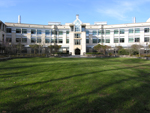 (f/5.1, 1/180 sec.) Click to enlarge. |
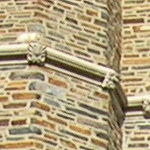 |
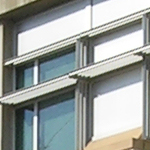 |
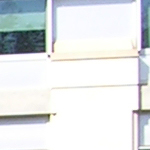 |
In the first two images above, the Coolpix 8400 proves it can capture a very high level of detail. However, we cropped out a small 100% portion of both images that show subtle jaggies along diagonal lines. Although the jaggies are not too strong, we were surprised to see these at all in the highest quality JPEG mode. In the third image, we have cropped out a small portion of the image where the 8400 has mildly overexposed the subject.
 (f/2.6, 1.4 sec.) Click to enlarge. |
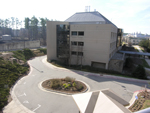 (f/5.1, 1/160 sec.) Click to enlarge. |
 (f/5.1, 1/180 sec., Macro scene) Click to enlarge. |
 |
 |
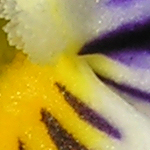 |
In the fourth picture above, we have highlighted something that we saw in a number of the images that we took. It seems that sometimes the 8400 will blur details near the edges/corners of the frame. In the fifth sample, we are impressed to see that this camera is "purple-fringe free". Even in pictures where cameras are usually prone to display purple-fringing, the 8400 shows superb control. In the final image, the camera proves capable of taking very detailed and vibrant macro shots. With all of these images, at the default "normal" sharpening, they are a little soft straight out of the camera. This is preferable for people who plan to post-process the images in order to have more control over sharpening, contrast, etc.
In general, we are very impressed with the image quality of the 8400. The camera displays no sign of chromatic aberrations and captures images with a very high level of detail. The only problems that keep image quality from being outstanding are the mild blurring in the edges/corners of the frame and the very slight jaggies that we had detected. We also should mention that the built-in red-eye reduction worked extremely well for us. Not once did any of our pictures suffer from red-eye, even in circumstances where it is commonly a problem (low-light and large pupils).
RAW VS. JPEG
We wanted to compare the difference in image quality between JPEG/Extra and RAW. However, we ran into a problem when trying to export NEF files with the bundled PictureProject software. The application would simply crash whenever we tried to convert the file. Therefore, we converted the NEF files to TIFF in the camera. Below is a comparison of an image in both JPEG/Extra and RAW (converted to TIFF). Click here to download the original TIFF file (WARNING: TIFF file is 23 MB!).| JPEG | RAW |
 Click to enlarge. |
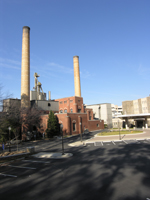 Click to enlarge. |
 |
 |
We found it very difficult to see any differences between the two images. At most, there appears to be a touch higher saturation in the JPEG image. This says quite a bit for the ability of the JPEG/Extra setting. It is unfortunate that RAW conversion (via PictureProject) appears to be unavailable at this time. We expect that Nikon will issue an update to address this problem.
Night Landscape (Scene mode)
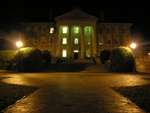 (f/2.6, 2 sec., ISO 50, Tungsten WB) Click to enlarge. |
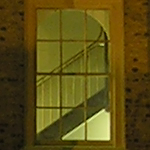 |
In this image taken in Night Landscape Scene mode w/Noise reduction, we can see that the 8400 is capable of producing crisp, low-noise, long exposures. When this image was taken with Auto WB, there was a strong yellowish/orange cast from the tungsten lights on both sides of the building. The 8400 can be set for a timed exposure of up to 10 minutes and can be set to "bulb" longer exposures.
Movie Mode
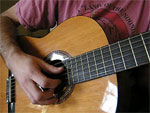 (320x240, 15 fps, VR disabled) Click to view. |
 (320x240, 15 fps, VR enabled) Click to view. |
The two video clips above were recorded to demonstrate an audio sync problem that occurs when the VR (vibration reduction) option is disabled. In the first clip, we can see that there is a small delay in the audio. When we enabled VR for the 2nd clip, the audio sync problem disappeared. Although we expect that this problem will be addressed in a future firmware update, it is an important point to note.

(640x480, 30 fps, VR enabled)
Click to view.
The image quality of Movie mode is very impressive at 30 fps. It is unfortunate that at 640x480, the 8400 limits you to only 60 seconds of video. In addition, we were disappointed to see that the black & white and sepia options are only available for the 320x240 resolution. The optical zoom is disabled during recording, but the digital zoom can be utilized.










3 Comments
View All Comments
pigdog - Wednesday, January 12, 2005 - link
The return of the hairy hand!ShinGouki - Wednesday, January 12, 2005 - link
Oops I've noticed its Mr Caston that is the author of the review sorry for the mistaken identity.ShinGouki - Wednesday, January 12, 2005 - link
That you playing the guitar in those clips Anand?Don't suppose there's any hope you feel like starting a section on consumer to semi pro level audio recording hardware / software eg M-audio Audiophile or Terratecs DMX fire type cards not that Creative rubbish. Be nice to have anandtech quality reviews on that type of product and who knows might even cause them to release less buggy drivers if they are under more scrutiny.
*sorry for being totally off topic :), in other news its nice to see you continue with the camera reviews*